In the field of new energy vehicles, the state has smashed hundreds of billions of subsidies. However, after this year's subsidy policy "backslope", these domestic new energy vehicle companies that have received subsidies have all become "Liu Adou".
There are both "mixed-day" new energy vehicles that "can be sold" and "national pride" car companies like BYD (01211-HK) (002594-CN). According to the data disclosed by the China Automobile Association, from January to June 2019, the sales of new energy vehicles were 617,000, an increase of 49.6% year-on-year, and from July, with the subsidy "recession", the sales of new energy vehicles were five Lianjiang.
In addition to the year-on-year decline in sales for several months, the new energy vehicle industry has serious problems with self-production and self-sales, the contradiction between the separation of trams and cost control, and the divergence of directions between pure electric vehicles and fuel cell vehicles. It has been reduced to the point of refractory illness, which is chilling.
A more central issue is that the R&D investment of domestic new energy vehicle companies is too low, and the vast majority still remain in the "workshop assembly" stage. Taking battery replacement as an example, even BYD, a benchmarking company in the domestic industry, sells batteries for replacement every three years at about 48,000 to 62,000, which is almost the same as the gasoline cost of fuel-powered vehicles in three years.
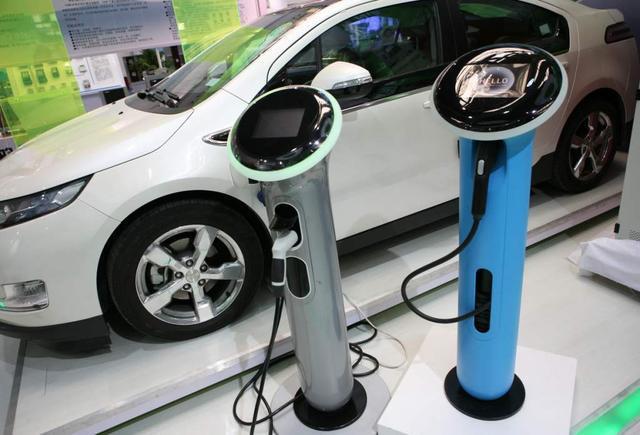
Since July 2019, with the domestic new energy vehicle subsidy policy "New Deal", the production and sales of new energy vehicles have suddenly dropped.
In July, the domestic production and sales of new energy vehicles were 84,000 and 80,000 respectively, down 6.9% and 4.7% from the same period of last year; in August, the production and sales were 87,000 and 85,000 respectively, compared with the previous year In the same period, they dropped by 12.1% and 15.8% respectively; in September, the production and sales were 89,000 and 80,000 respectively, down 29.9% and 34.2% from the same period of last year...
By November, the production and sales of new energy vehicles were 110 thousand and 95,000 vehicles, down 36.9% and 43.7% year-on-year. From these data, the domestic new energy vehicle industry has experienced a year-on-year decline in production and sales for five consecutive months, and the decline has shown a gradual expansion trend, which is worrying.
In fact, in July 2019, the China Automobile Association has lowered its sales forecast for new energy vehicles in 2019 from the original 1.6 million to 1.5 million. However, from January to November 2019, the cumulative sales of domestic new energy vehicles reached 1.043 million units, and there is still a gap of 450,000 units from the expected 1.5 million units. It is almost impossible to accomplish this goal.
Moreover, considering the current domestic economic environment and the "cold winter" of the auto sales market, there is a large probability of a year-on-year double-decline in the production and sales of new energy vehicles in December 2019.
Among them, as the leader of the domestic new energy vehicle industry, BYD's production and sales performance of new energy vehicles is particularly noticeable.
In November 2019, BYD's new energy vehicles achieved sales of 11,220 units, a decrease of 62.7% from the same period last year. Also in November, sales of fuel vehicles reached 30,075, a year-on-year increase of 43.8%. It is worth noting that this has been a few months in a row, and BYD fuel car sales are more than new energy vehicles.
In other words, after the subsidies for new energy vehicles subsided, even domestic leading companies in this field have fallen into the dilemma of holding tightly the thighs of fuel vehicles.
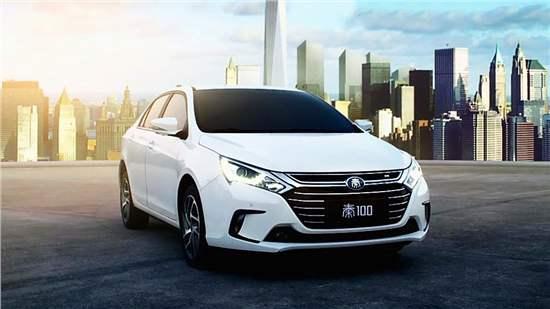
Compared with the sales volume of new energy vehicle companies and the tight thighs of fuel vehicles, since 2013, the state's conservative investment in subsidies for the new energy vehicle industry has been estimated to exceed 100 billion. Among them, from 2016 to 2017 alone, the subsidy funds for new energy vehicles announced after the approval of the expert group of the Ministry of Industry and Information Technology reached a total of 44.738 billion yuan. According to the national and local 1:1 subsidy standard, the total subsidy approached 90 billion yuan.
On December 10, the Department of Equipment of the Ministry of Industry and Information Technology announced the “Annual Review of the Advance Funds for New Energy Vehicles in 2018”, with a total amount of 13.778 billion yuan. In this way, there is no problem if the subsidies for new energy vehicles exceed 100 billion yuan.
Hundreds of billions of subsidies raise a group of "rubbing enterprises", the core problem is not solved
Why did it invest hundreds of billions of financial subsidies, but it just smashed the nickname of "the first country in the production and sales of new energy vehicles". Once the subsidies subsided, there was an embarrassing situation of "all naked swimming".
This is closely related to the so-called new energy vehicle companies in China who are not enterprising and even reduced to "rubbing enterprises" under the subsidy policy.
Previously, under the general environment of national policy subsidies, the ideas of "sell it out" and "can get subsidies" had caused the idea that new energy auto companies were not interested in corporate R&D investment. On the contrary, in order to get subsidies and control costs, most new energy vehicle companies choose to buy batteries from other companies and get financial subsidies after assembly and production.
Taking Shenzhen, where new energy vehicle companies gather, as an example, the new energy vehicles produced by the company can receive subsidies as long as the cruising range can reach 100km, and the amount of subsidies has reached 70,000. For this reason, many car companies directly get batteries from Ningde, BYD, and even some second- and third-tier companies, and they can get subsidies by replacing the original fuel car fuel engine.
Fundamentally speaking, this kind of behavior belongs to "deception". It is sad that the hundreds of billions of subsidies smashed by the state finance have become a tool for these enterprises to make money.
In addition to the phenomenon of "rubbing food" and "deception", many leading domestic auto companies compete for price subsidies after receiving new energy vehicle subsidies, but they do not pay much attention to new energy vehicle R&D investment.
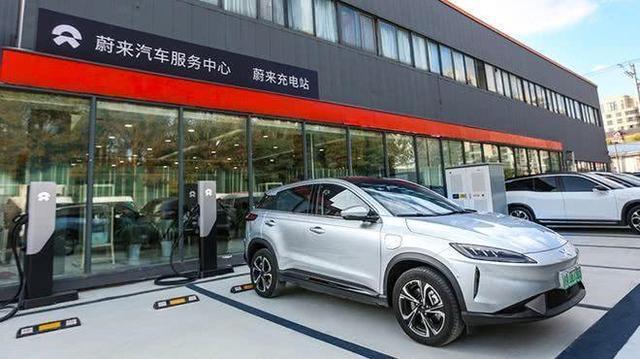
Taking BAIC New Energy Vehicles as an example, in 2018, BAIC New Energy achieved revenue of 16.438 billion yuan, and invested only 54.427 million yuan in research and development, accounting for 0.33% of revenue. From January to June 2019, BAIC New Energy's revenue was 9.919 billion yuan, while investment in research and development was only 159 million yuan.
In contrast, in 2018, the cost of BAIC New Energy for car sales was about 1.457 billion yuan; in the first half of 2019, the cost of BAIC New Energy for car sales was about 583 million yuan.
Although BAIC New Energy stated that the relevant R&D income is only accrued in the company's financial balance sheet, the actual R&D investment has reached billions of yuan.
However, according to the data disclosed by BAIC New Energy, BAIC New Energy's R&D staff in 2018 was only 1,500, compared to BYD's nearly 20,000 R&D team, which can only be said to be "little to see."
In the research and development results data disclosed by BAIC New Energy, a total of 4,273 patents have been applied for, accounting for 46% of invention patents; 1,583 enterprise standards have been established, leading and participating in the preparation of 83 national and industry standards. Among them, the new energy vehicle test center put into use on July 22 was built by Beiqi New Energy for 2.051 billion yuan.
It's just that thousands of inventions have applied for patents and the new energy vehicle laboratory that cost billions of dollars has not been able to replace BAIC New Energy's impressive technology in core technologies such as batteries, motors and electronic control. progress.
Not only BAIC New Energy, but also BYD, which has been hailed as the "national brand of the new energy vehicle industry" by domestic consumers in recent years, the technological progress in the new energy vehicle industry is also difficult to satisfy.
As the only new energy vehicle company in China that masters electric control, battery, motor and IGBT (vehicle chip), BYD is worthy of the industry's technical benchmarking enterprise in the field of domestic new energy vehicle technology. However, compared with international leaders in the same industry, BYD The technological gap of new energy vehicles is obvious.
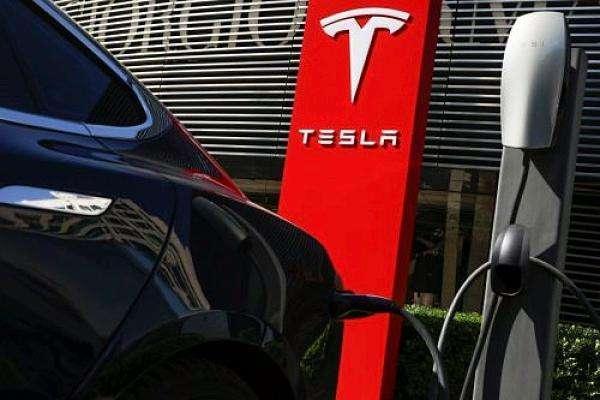
Taking BYD car battery as an example, although the officially disclosed data is consistent with the national subsidy requirements, in actual use, the cruising range of BYD new energy vehicles is difficult to reach its officially disclosed data, especially in winter, the cruising range is more It's a big discount. And this is not a BYD car, it is almost a "unspoken rule" of the domestic new energy vehicle industry.
Generally, BYD new energy vehicles need to be replaced once after three years of use. In the media event of the recent "Don DM car owner spent 60,000 replacement batteries", it takes three years to replace a battery after three years of use. Ten thousand yuan, which is almost the same as the gasoline cost of a fuel-powered vehicle within three years.
In terms of spare parts for new energy vehicles, such as electric drive high-speed bearings, proton exchange membranes, high-pressure hydrogen storage bottles, various high-pressure precision valves, etc., many domestic new energy vehicle companies, including BYD, have made no significant progress. This is also the reason why Beijing Automobile, Guangzhou Automobile, BYD and other head car companies have signed cooperation agreements with Toyota.
Leading overseas industries enter the bureau, the issue of "self-production and self-sale" needs to be vigilant
As such, it is not surprising that Tesla can sell well in the domestic market. In 2019, Tesla Model 3 has been included in the national new energy vehicle subsidy list. With the entry of overseas leading brands, new major changes will take place in the domestic new energy vehicle industry.
However, compared with the substantive progress of core technology, new energy vehicle companies' "deception", and the entry of overseas leading brands, etc., the problem of "self-production and self-sale" of domestic new energy vehicle companies is very harmful.
The so-called "self-produced and self-sold" problem refers to the fact that some of the leading new-energy car companies with bullish sales will sell the new-energy vehicles produced to the shared travel platform established by the company. This is like switching a new energy vehicle from the left hand to the right hand. Although the sales data seem to be gratifying, the actual sales of the enterprise are very difficult.
At present, in addition to Geely Automobile's "Cao Cao Travel", FAW Auto has "FAW Travel", Dongfeng Automobile has "Dongfeng Travel", BAIC Group holds "Huaxia Travel", SAIC Group holds "Xiandao Travel"...
Even some new forces of new energy vehicles also have self-contained travel platforms, such as Great Wall Motor's "Eula Travel", Xiaopeng Auto's "Youpeng Travel", and Weimar Automobile's "immediate travel". It can be said that this kind of "self-production and self-sale" problem in the new energy vehicle industry has become very common.
According to the data disclosed by Qianzhan.com, in January 2018, when Cao Cao introduced Geely Automobile's strategic investment, the number of vehicles on the platform network exceeded 12,000, most of which were Geely Emgrand EVs. By the end of 2018, Cao Cao's travel network had accumulated a total of 32,000 vehicles.
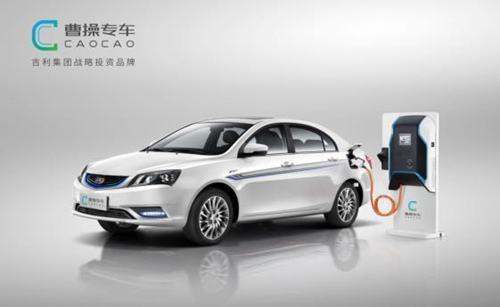
Taking BYD car battery as an example, although the officially disclosed data is consistent with the national subsidy requirements, in actual use, the cruising range of BYD new energy vehicles is difficult to reach its officially disclosed data, especially in winter, the cruising range is more It's a big discount. And this is not a BYD car, it is almost a "unspoken rule" of the domestic new energy vehicle industry.
Generally, BYD new energy vehicles need to be replaced once after three years of use. In the media event of the recent "Don DM car owner spent 60,000 replacement batteries", it takes three years to replace a battery after three years of use. Ten thousand yuan, which is almost the same as the gasoline cost of a fuel-powered vehicle within three years.
In terms of spare parts for new energy vehicles, such as electric drive high-speed bearings, proton exchange membranes, high-pressure hydrogen storage bottles, various high-pressure precision valves, etc., many domestic new energy vehicle companies, including BYD, have made no significant progress. This is also the reason why Beijing Automobile, Guangzhou Automobile, BYD and other head car companies have signed cooperation agreements with Toyota.
Leading overseas industries enter the bureau, the issue of "self-production and self-sale" needs to be vigilant
As such, it is not surprising that Tesla can sell well in the domestic market. In 2019, Tesla Model 3 has been included in the national new energy vehicle subsidy list. With the entry of overseas leading brands, new major changes will take place in the domestic new energy vehicle industry.
However, compared with the substantive progress of core technology, new energy vehicle companies' "deception", and the entry of overseas leading brands, etc., the problem of "self-production and self-sale" of domestic new energy vehicle companies is very harmful.
The so-called "self-produced and self-sold" problem refers to the fact that some of the leading new-energy car companies with bullish sales will sell the new-energy vehicles produced to the shared travel platform established by the company. This is like switching a new energy vehicle from the left hand to the right hand. Although the sales data seem to be gratifying, the actual sales of the enterprise are very difficult.
At present, in addition to Geely Automobile's "Cao Cao Travel", FAW Auto has "FAW Travel", Dongfeng Automobile has "Dongfeng Travel", BAIC Group holds "Huaxia Travel", SAIC Group holds "Xiandao Travel"...
Even some new forces of new energy vehicles also have self-contained travel platforms, such as Great Wall Motor's "Eula Travel", Xiaopeng Auto's "Youpeng Travel", and Weimar Automobile's "immediate travel". It can be said that this kind of "self-production and self-sale" problem in the new energy vehicle industry has become very common.
According to the data disclosed by Qianzhan.com, in January 2018, when Cao Cao introduced Geely Automobile's strategic investment, the number of vehicles on the platform network exceeded 12,000, most of which were Geely Emgrand EVs. By the end of 2018, Cao Cao's travel network had accumulated a total of 32,000 vehicles.

What's more, large and small car companies have set up travel platforms one after another, fearing that they will repeat the lesson of sharing bicycles. Compared with the shared bicycles with low cost and relatively few players, the number of shared car platforms is greater, the cost investment is greater, and the city resources are more occupied. Once the collapse of a shared bicycle platform appears, the losses caused by shared cars will be even greater.
There are too many problems, it is too early for domestic new energy vehicles to replace fuel vehicles
Relying on subsidies to reduce costs and selling prices, the technology is not enough, and the core performance parameters are unsatisfactory. With the help of its travel platform "left hand to right hand" to rush sales... The domestic new energy vehicle market is problematic, and it is too early for new energy vehicles to replace fuel vehicles.
In addition, in June 2019, the Development and Reform Commission, the Ministry of Commerce and other jointly issued the "Implementation Plan for Promoting the Renewal and Upgrade of Key Consumer Products and Smooth Resource Recycling (2019-2020)" emphasized the need to develop new energy vehicles with separate consumption models Products, continue to support the construction of "charging and replacing" facilities.
According to this analysis, "vehicle-electricity separation" will become the main trend of future development of the new energy automobile industry. The so-called "vehicle-electric separation" refers to breaking the bottleneck of mileage by replacing the battery, and the battery replacement needs to be charged according to the mileage traveled.
However, the cost pressure that the separation of vehicles and electricity brings to new energy vehicle companies is obvious. Only the construction of replacement power stations, the production, purchase, and storage of a large number of batteries to be replaced require a large amount of investment. This is almost impossible for new energy vehicle companies whose production and sales are declining right now.
Apart from the cost issue, more is technical investment. Research and development of new energy vehicles that can easily replace batteries, batteries that can be stored for a long time and charged frequently require a lot of capital and time investment. More importantly, how to replace batteries among different car companies requires not only capital and technical investment, but also the formulation of unified industry standards.
It can be seen that as the "vehicle-electricity separation" model has become a major trend, for new energy vehicle companies, cost pressures, technical difficulties, and unified standards have become another problem in the development of new energy vehicle industries under the "vehicle-electricity separation" model.
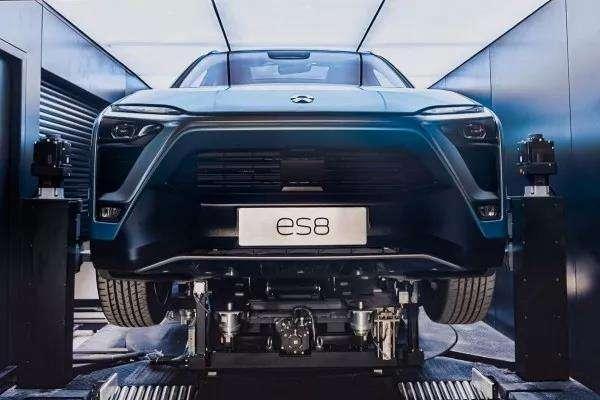
As far as the "vehicle-electricity separation" model is concerned, in fact, the domestic new energy vehicle industry is also controversial in the way of developing "vehicle-electricity separation". The main one is the development of pure electric new energy vehicles or the type of new energy vehicles equipped with fuel cells. There have been long-term differences in the industry.
But in fact, no matter what kind of development, it seems that domestic new energy vehicle technology can not pass.
At present, the development of more pure electric vehicles with new battery life. However, for now, pure electric storage batteries often cannot pass the specific parameters. In terms of fuel cell technology, domestic research in this area is still in its infancy as a whole. Whether it is the storage of hydrogen energy or the utilization efficiency of new energy, there is still insufficient technical support.
Recently, in the "New Energy Vehicle Industry Development Plan (2021-2035)" (Draft for Comment) disclosed by the Ministry of Industry and Information Technology, it is clearly proposed that the proportion of new energy vehicle production and sales will reach 25% by 2025, and the proportion of intelligent network vehicles Sales accounted for 30%. However, considering that in the first three quarters of 2019, domestic sales of new energy vehicles accounted for only 4.74%, and it is still in a situation of continued decline in sales, it is a bit difficult to achieve the target of 25% by 2025.
From a macro point of view, there is still a lot of domestic new energy vehicles to replace fuel vehicles when new energy vehicle companies lack sufficient technical support, there is a lack of unified technical standards in the industry, and national subsidies have declined significantly, and leading foreign brands have entered into the market. The problem is too early.
Conclusion:
Judging from BYD's performance in recent months, the structure of the domestic new energy vehicle industry has not yet been finalized. In the future, as domestic Tesla enters mass production and the national fiscal subsidy policy is tightened, the "catfish effect" of the new energy vehicle industry will begin to appear, and some new energy vehicle companies that survive on "deception" will withdraw.
However, for domestic new energy vehicle companies, the current financial subsidies have turned into "Liu Adou" one after another, and it may take a lot of hard work to survive in the current competitive landscape.
The development of the new energy vehicle industry is not just a matter for the relevant car companies. On the contrary, with the development of the domestic new energy vehicle industry, it has entered a stage where uniform standards and rules need to be formulated. At the national level, integrating various resources and standards of the new energy vehicle industry, policy guidance is far more beneficial than financial subsidies.
None